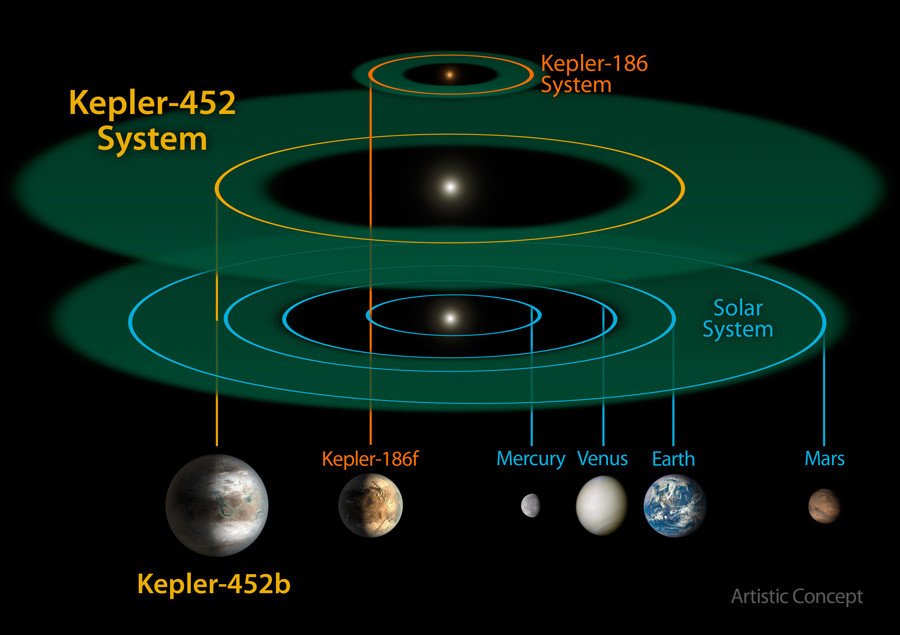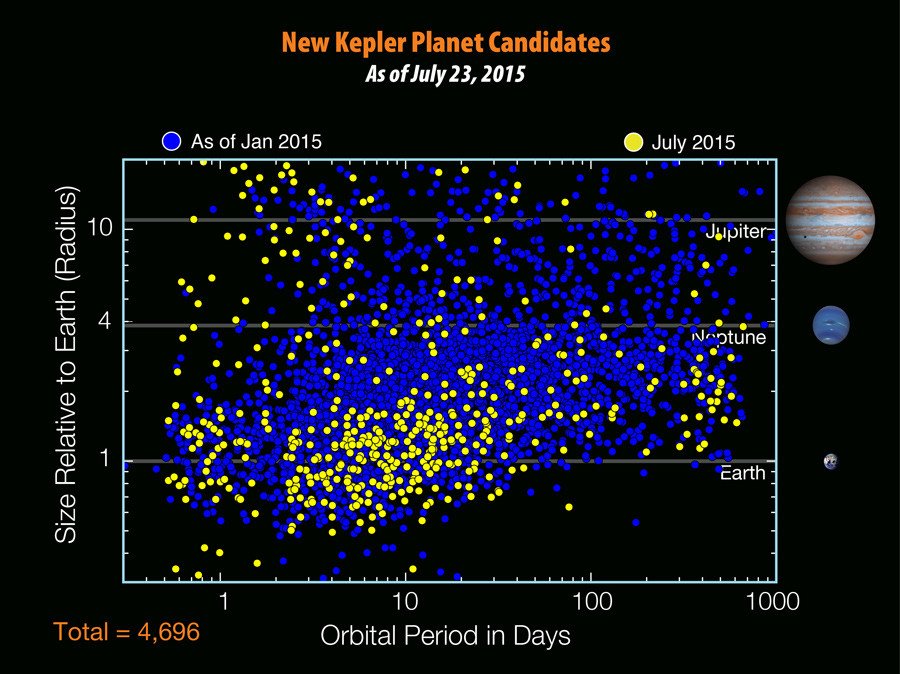We are not alone? NASA’s Kepler telescope finds first planet similar to Earth

NASA scientists have found the first planet outside of the solar system that could be similar to Earth and capable of sustaining life. Unlike other similarly sized planets, the newly-discovered one lies in a “habitable zone” near a sun-like star.
While looking for possibly hospitable planets outside the solar system, the Kepler telescope has recently found a planet some 1,400 light years away, NASA said in a press release on Thursday.
The planet was discovered in the constellation Cygnus and is about 60 more massive than the Earth. It’s believed to be rocky and there’s a good chance that it has liquid water on the surface – an important prerequisite for life.
READ MORE: Aliens ahoy! Massive mothership ‘the size of Idaho’ caught in NASA images, say ufologists
"It's great progress in finding a planet like Earth that is similar in size and temperature around a sun-like star," Jeff Coughlin, Kepler research scientist at the SETI Institute in Mountain View, California, said at a news-conference, as cited by Reuters.

The research paper is to be published in The Astronomical Journal, marking the first milestone in a four-year-long work of the Kepler’s mission of finding another “Earth”.
The newly discovered Kepler-452b is one of the 4,696 so-called “planet candidates” found by the NASA astronomers. It falls among the 1,030 that have been confirmed as planets.
READ MORE: A 2nd totally different mountain range discovered on Pluto, scientists baffled (PHOTOS)
"On the 20th anniversary year of the discovery that proved other suns host planets, the Kepler exoplanet explorer has discovered a planet and star which most closely resemble the Earth and our Sun," said John Grunsfeld, associate administrator of NASA’s Science Mission Directorate at the agency’s headquarters in Washington, in the press release. “This exciting result brings us one step closer to finding an Earth 2.0."

The planet is 20 percent brighter than the Earth, its orbit is 385 days long and it is 5 percent further from its parent star than the Earth is from our sun.
“We can think of Kepler-452b as an older, bigger cousin to Earth, providing an opportunity to understand and reflect upon Earth’s evolving environment," said Jon Jenkins, Kepler data analysis lead at NASA's Ames Research Center in Moffett Field, California. "It’s awe-inspiring to consider that this planet has spent 6 billion years in the habitable zone of its star; longer than Earth. That’s substantial opportunity for life to arise, should all the necessary ingredients and conditions for life exist on this planet.”
READ MORE: NASA-funded study may clear way for human return to Moon – and Mars
The research was supported by ground-based observations at the University of Texas at Austin's McDonald Observatory, the Fred Lawrence Whipple Observatory on Mt. Hopkins, Arizona, and the W. M. Keck Observatory atop Mauna Kea in Hawaii.












